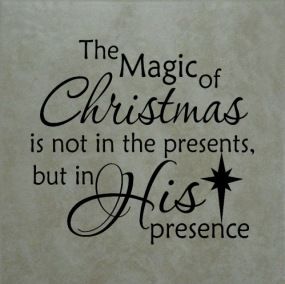Impress your family and friends with these festive facts about Christmas traditions and customs …
Why is Christmas on December 25th ?
Although the exact date of Christ’s birth is unknown, Christmas Day has been symbolically celebrated on the 25th of December since the 4th century.

The word Christmas comes from “Christ’s Mass”. We do know that the oldest existing record of a feast to celebrate the birth of Christ is in the Roman almanac called the Chronographer of 354 or the Philocalian Calendar. This ancient almanac noted that a festival commemorating Christ’s birth was observed by the church in Rome in the year 336.
Chronographers of the third century were the ones who reckoned December 25, around the winter solstice, as the most likely day of Christ’s birth.
In ancient times, Celts divided the year into four sections marked by “quarter days” – the days of the two solstices and two equinoxes. The winter solstice, the shortest and darkest day of the year, was the fourth quarter day. It signaled a celebratory time, as the Sun began to reemerge and the land experienced a rebirth.
Gradually, to conform more closely to the liturgical year of the Christian church, the fourth day merged easily with the Christian celebration of the birth of Christ. As Christianity began to spread in the 4th century, the Christmas feast day was set on December 25 by Pope Julius I to align with the Roman pagan holiday Dies natalis solis invicti, “the birth of the invincible Sun.”
Many historians believe that the church stirred up interest in a festival at this time of year to counter the pagan festivals surrounding the solstice, but no historical document proves Rome’s involvement. The record shows that such a festival was adopted throughout the Christian world by the year 458.
Why do we decorate trees?
Decorated trees were used in winter celebrations long before the advent of Christianity. Plants and trees that remained green all year had a special significance for people who lived in cold winter climates.
Ancient people hung evergreen boughs over their doors and windows. Some believed that evergreens kept witches, ghosts, evil spirits, and illness away.
Romans decorated evergreen trees with trinkets and topped them with an image of their sun god. Druid sorcerers hung golden apples and lit candles on oak trees to celebrate the winter solstice.
Christian Christmas celebrations did indeed begin using the evergreen as a symbol about 400 years ago in Germany. This Christmas practice spread to most of northern Europe by the 19th century.

Why do we give gifts?
Ever wondered how the custom of giving Christmas gifts originated? No, it’s not invented by the department stores.
The ancient Romans gave each other gifts on the calends (first day) of January, and the practice spread throughout the Roman Empire.
Eventually, Christians moved the custom to December 25, although many Christians still give gifts on January 6, the feast of the Epiphany, commemorating the manifestation of Jesus’ dive nature to the Magi.
Who made the first Christmas card?
People used to write their own cards. The first Christmas card design is thought to have been printed in England in 1843. Wood engravers of the time often produced prints with religious themes, but this was the first time anyone produced these prints in quantity and sold them (1,000 copies in London). The design was of a family party, beneath which were the words “A Merry Christmas and a Happy New Year to You.” In the mid- 19th century in the United States, the owner of a variety store in Albany, New York,
produced a card carrying Christmas greetings.
What is the origin of Yuletide?
The word Yuletide originated from the word Yule, which was recorded in Latin writings as early as A.D. 726. At this time, the form of the word was guili. Both terms refer to a 12-day pagan feast celebrated around the time of year that has come to be known as the Christmas season.
Information gathered from The Old Farmer’s Almanac